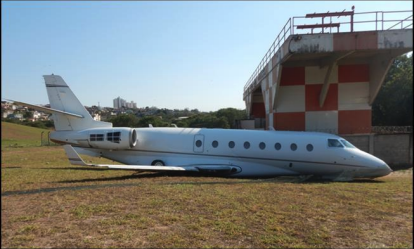Pampulha Aerodrome (SBBH) 07SET2020 – 21:45 (UTC)
Abstract of the FINAL REPORT A-106/CENIPA/2020
Source
https://sistema.cenipa.fab.mil.br/cenipa/paginas/relatorios/rf/en/PR-AUR_07_09_2020-ENG.PUB..pdf
“At approximately 21:35 UTC, the aircraft took off from SBBH (Pampulha – Carlos
Drummond de Andrade – Aerodrome, Belo Horizonte, State of Minas Gerais) on a local
instrument training flight with touch and goes, with 03 POB (two pilots and an extra crew
member).
The flight proceeded uneventfully until the first approach. During the run after touching
down, the aircraft overran the departure end of the runway in a direction slightly to the right
of the longitudinal axis, and collided with a nearby protective fence located past the
departure end of runway 13. The airplane came to a stop at a distance of 95 m from the
runway limits.
The aircraft sustained substantial damage.
The PIC suffered minor injuries. The SIC and the extra crew member were not injured.”
“Attitude – a contributor.
The contribution of the pilots’ attitude to the outcome of this occurrence can be found
in two distinct moments: when the go-around procedures were improvised, and when the
approach was continued under marginal safety conditions, reflecting difficulties in the way
the crew thought and acted.
Communication – a contributor.
One considered that the lack of clear and assertive communication between the pilots
at the time of the decision to abort the takeoff, and the lack of definition as to which pilot had
the aircraft controls in that moment contributed to the aircraft exceeding the departure end
of the runway.
Crew Resource Management – a contributor.
The lack of adequate management of the tasks performed by the pilots during the
transition to the takeoff run after the touch-down, a critical moment of the flight, combined
with the lack of clear communication between them contributed to the inadequate handling
of the aircraft on the ground and its consequent runway excursion.
Handling of aircraft flight controls – a contributor.
The ineffective control inputs during the final approach and during the attempt to stop
the aircraft after touchdown, as well as the application of the elevator trim to the opposite
side after the touchdown on the runway, indicated inadequacies in the handling of the
controls that contributed to the airplane’s runway excursion.
Piloting judgment – a contributor.
An inadequate assessment of the parameters related to the aircraft’s operation was
observed when there was an attempt to abort the takeoff after the airplane had reached 147
knots, without evaluating the remaining runway length to ensure full stop of the aircraft within
the runway limits.”
